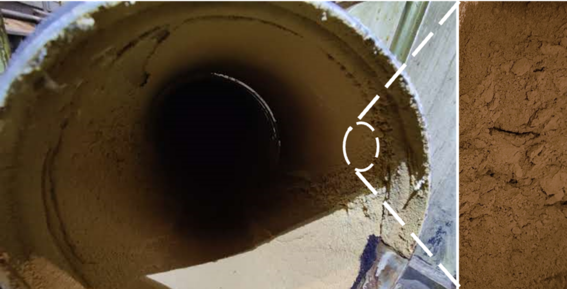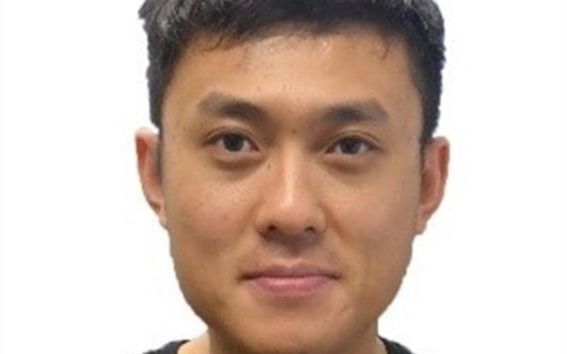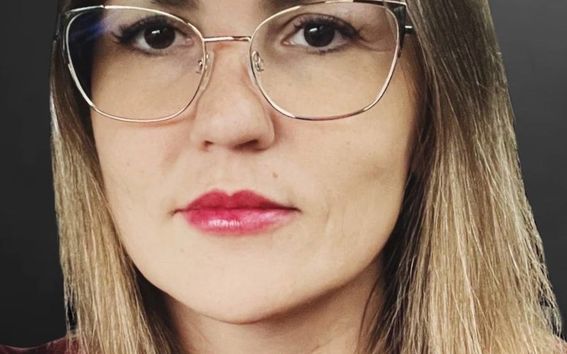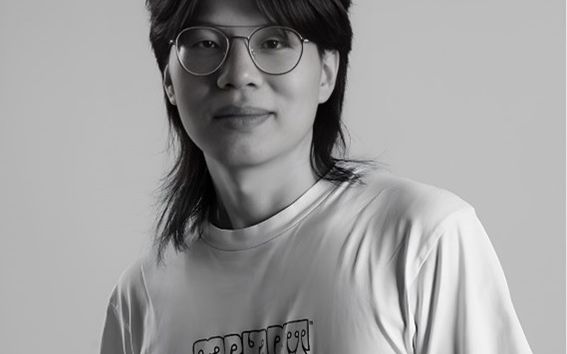In September, 15 new Academy Researcher Fellows will start at Aalto
The Academy of Finland has granted Aalto University funding for 15 Academy Research Fellowships


Effect of Fiberline on Chemical Transformation of Wood Extractives- Reaction Mechanism and Recovery (BE-Stilbene)
Buildup of the secondary-form wood extractives decreases the pulp mill’s productivity as they partly form different carry-over pitch (or scale) components at the fiberline, leading to excessive chemical consumption. The native-form wood extractives (prior to the fiberline) have been well researched for decades, but there is not enough scientific data to investigate the reaction mechanisms behind its secondary form (in the fiberline). Industrial-scale separation / recovery process, however, is largely dependent on the reaction mechanisms that occur throughout the fiberline. If we want to utilize them in future biorefineries, we need to know how they react in the fiberline and where they can be recovered (in the form having their maximum commercial value) before being chemically spoiled (or reacted). CIMANET project BE-Stilbene is designed to find ways to gain essential knowledge of the reactions (such as degradation, oxidation or formation of newly secondary products) between the wood extractives and cooking (kraft and sulfite)/ bleaching chemicals.
Related publication:
Dou, J.*; Sui, M.; Malinen, K.; Pesonen, T.; Isohanni, T.; Vuorinen, T. Spruce Bark Stilbenes as a Nature-inspired Sun Blocker for Sunscreens. (2022-03-02) Green Chem. 24, 2962−2974. https://doi.org/10.1039/D2GC00287F.

Understanding the Role of Wood Extractives in Formation of Pitch Deposits (WEPitch)
Control of wood extractives has a vital role in closing the water loops in pulp mills, thus helping the pulp and paper industry to achieve the “zero effluent” target. As there is no efficient way to control and remove them from the fiber line, extractives can be a technical challenge. Wood extractives cause a lot of effort to the process and can create serious problems, because they flow and accumulate in water, forming pitch deposits. The extractives retained in the pulps may adversely affect the physiochemical properties of the products. Efficient removal of pitch deposits from the fiber line is currently hampered by the lack of knowledge of their full chemical characteristics and the exact formation mechanism. The Industry- and FinnCERES- jointly funded project WEPitch (2024-2028) is designed to find ways to gain essential knowledge to understand, prevent and control deposit formation and improve the overall operation, revenue and quality performance of the pulp and paper mill.
Related publication:
Dou, J.*; Niemelä, Klaus*; Haatainen, Tiina; Tervola, Pekka; Vehmaa Janne*. Investigation of pitch deposits throughout the fibre line of softwood pulp mills. (2023-03-28) J. Cleaner Prod. 405, 136940. https://doi.org/10.1016/j.jclepro.2023.136940.

Trans-stilbenes can be isomerized to their cis-isomers under sunlight, and the cis-isomers are prone to undergo a Mallory reaction yielding polycyclic aromatic hydrocarbons. This preference is very hard to overcome as it is strictly under orbital symmetry control. The Academy of Finland Research Fellow project (2023–2027) will focus on functionalizing the recovered stilbene from pine wood sawdust and spruce bark as ultra-stable UV-filter alternatives for sunscreen. This may improve the stilbene stability 1000-fold without losing its UV-absorbing activity. These materials are today merely burned for energy, but when using them to added-value chemicals, it could allow more incomes for the Finnish forest owners and industry.
Related publications:
Dou, J.*; Multia, Evgen; Dong, Xinyue; Wang, Lei*; Vuorinen, Tapani. Valorization of long-neglected spruce bark and bark-press effluents through integrated utilization of stilbenoids and pectin. (2023) Chem. Eng. J. https://doi.org/10.1016/j.cej.2023.144122.
Dr. Dou teaches the course “CHEM-LV04 - Analytics in Wood Chemistry (5 ECTS)”, organized next time at May 2025. The target of the course is to give a comprehensive overview of analytical methods to doctoral students for chemical characterization of non-cellulose wood components. Particularly, the students are expected to have a basic understanding of the chemistry of wood (chemical structure) in relation to their isolation/ purification protocols. Also, Dr. Dou teaches “CHEM-E1210 - Bioproduct Mill Recovery Processes (5 ECTS)” next time at October 2025. Dou also gives the lecture ‘‘Wood Extractives in Fiberline’’ as part of the course ‘‘CHEM-E1150 - Biomass Pretreatment and Fractionation’’. The main target of the lecture is to focus on the reactivity of wood extractives in fiberline.
| Name | Role | Title of thesis | Year(s) | Current location |
| Hao Xi | M.Sc. | Effect of Bleaching on the Transformation of Wood Stilbenes | 2024 | |
| Muhammad Ali | M.Sc. | Understanding of the Non-cellulosic Components in Deinked Pulp | 2024 |
This project, mainly funded by Finnish Cultural Foundation (2016-2019) and FinnCERES (2019-2021), provides a general, integrative study on the morphology and chemistry of willow wood and bark and its fractionation into hot water extract, fiber bundles, fibers and fibrils. Potentially interesting research approaches and gaps in our current knowledge are identified and discussed on the way towards full exploitation of the value of the bark as a source fibers and extracts.
Dou, J.*; Wang, Jincheng; Hietala, Sami; Vuorinen, Tapani*; Zhao, Jian. Structural Features of Lignin-Hemicellulose-Pectin (LHP) Orchestrate the Tailored Microbial Consortium for potential in Bark Biorefinery. (2023) Green Chem. https://doi.org/10.1039/D3GC00808H.
Dou, J.*; Kögler, Martin; Kesari, Kavindra; Pitkänen, Leena; Vuorinen, Tapani. Seasonal dynamics in structural characteristics within bark stems of cultivated willow (Salix sp.) by NMR and time-gated Raman spectroscopy. (2023-01-26) Green Chem. 25, 1908−1919. https://doi.org/10.1039/D2GC04476E.
Dou, J.*; Wang, J.; Zhao, J.*; Vuorinen, T. Tailor-made Enzyme Consortium Segregating Sclerenchyma Fibre Bundles from Willow Bark. (2022-02-23) Green Chem. 24, 2576−2587. https://doi.org/10.1039/D2GC00188H.
Dou, J.*; Chandgude, V.; Vuorinen, T.*; Bankar, S.; Hietala, S.; Huy, L. Enhancing Biobutanol Production from Biomass Willow by Pre-removal of Water Extracts or Bark. (2021-10-22) J. Cleaner Prod.327, 129432. https://doi.org/10.1016/j.jclepro.2021.129432.
Dou, J.*; Heinonen, J.; Xu, C.; Vuorinen, T.; Sainio, T.* Chromatographic purification of the natural phytochemicals from willow bark water extracts. (2020-12-26) Sep. Purif. Technol. 261, 118247.https://doi.org/10.1016/j.seppur.2020.118247.
Dou, J.; Kim, H.; Li, Y.; Padmakshan, D.; Yue, F.; Ralph J.; Vuorinen, T*. Structural characterization of lignins from willow bark and wood. (2018-06-22) J. Agric. Food Chem. 66, 7294−7300. https://doi.org/10.1021/acs.jafc.8b02014.
Dou, J.; Galvis, L.; Holopainen-Mantila, U.; Reza, M.; Tamminen, T.; Vuorinen, T*. Morphology and Overall Chemical Characterization of Willow (Salix sp.) Inner Bark and Wood: Toward Controlled Deconstruction of Willow Biomass. (2016-06-06) ACS Sustainable Chem. Eng. 4, 3871–3876. https://doi.org/10.1021/acssuschemeng.6b00641.



Research Council of Finland Fellow Dr. Jinze Dou
Dr. Dou obtained his PhD in the field of Bioproduct Technology under the supervision of Prof. Tapani Vuorinen from Aalto University in 2018, though part of his research was carried out at the University of Wisconsin Madison, USA, under the supervision of Prof. John Ralph. During his postdoctoral research work at Aalto, he had long visits to the University of Aveiro, Portugal (Prof. Dmitry Evtyuguin), Lappeenranta-Lahti University of Technology in Finland (Prof. Tuomo Sainio) and Shandong University, China (Prof. Jian Zhao). In addition to these academic steps, he also has industrial experience working as a research scientist at Andritz Oy (January 2022-August 2023). The Research Council of Finland (formerly known as the Academy of Finland) awarded Dou the Academy Research Fellowship for 2023-2027.

Doctoral Researcher Wajeeha Munib
Munib is a doctoral student specializing in the stability enhancement of stilbenes from pine wood sawdust and spruce bark through chemical functionalization. She has a foundational Master's degree in organic chemistry and a robust research background in organic synthesis. Her current doctoral research is focused on developing ultra-stable UV filters for sunscreen applications, leveraging the inherent properties of softwood sawdust and spruce bark extractive stilbenes. Areas of interest include: wood extractives, controlled stereo chemical reactions, and chemical functionalization of stilbenes for macrocyclization.

Doctoral Researcher Elena Melnik
Elena is a doctoral researcher working on understanding the role of wood extractives in the pulp and paper industry, particularly using eucalyptus wood as a primary resource. Her research investigates the chemical composition of extractives and their transformation into pitch deposits, a significant issue in industrial processing. By understanding the pathways that lead to pitch formation, this research aims to contribute to more sustainable and efficient production processes. Elena’s previous academic background has provided a strong foundation in organic and analytical chemistry, with a specialization in separation methods in complex organic matrices. Areas of interest include wood chemistry, industrial process optimization, and advancing sustainable practices in the industry, with a focus on reducing environmental impact.

Master's Thesis Worker Kun Ouyang
Kun is a master's student at Aalto University, specializing in biomass refining. Under the supervision of Dr. Jinze Dou, he is currently conducting research for his master’s thesis on "Pulping and Bleaching of Bagasse". With a solid background in bio-based materials and pulping, and a bachelor's degree in the field, Kun is highly motivated to apply these technologies in industrial applications to conserve resources and improve the environment.

Doctoral Researcher Yue Wu
Wu is a doctoral student having background on pulping and bleaching technology. His research aims to orchestrate a tailored recovery strategy of wood extractives in the fiberline by understanding the underlying reaction mechanisms that occur at cooking and bleaching process. Areas of interest include the reaction mechanism of wood extractives in the ECF bleaching process, recovery process and analytical characterization of its products.

Research Assistant Lauri Leskinen
Lauri is a research assistant working to develop analytical methodologies for analysing fiber line samples with an emphasis on wood extractives. He has built a solid foundation of skills in analytical chemistry and a wide knowledge of fiber line processes throughout his studies and working experience. Extensive knowledge of wood extractives and their dissolution characteristics are key tools for solving pitch deposition problems which are a major concern in the pulping industry.

The Academy of Finland has granted Aalto University funding for 15 Academy Research Fellowships

FinnCERES, competence center for materials bioeconomy, is a Flagship for our sustainable future.